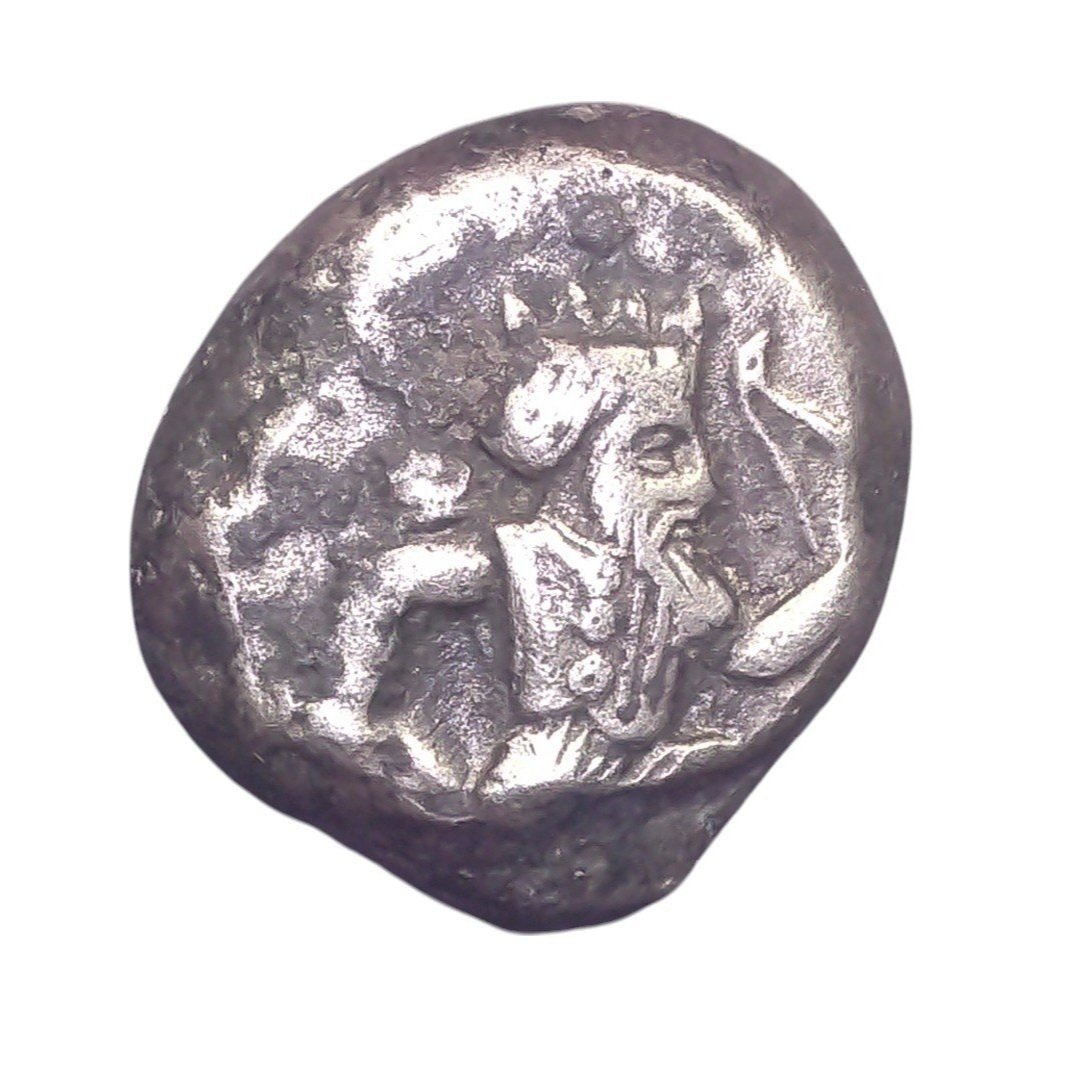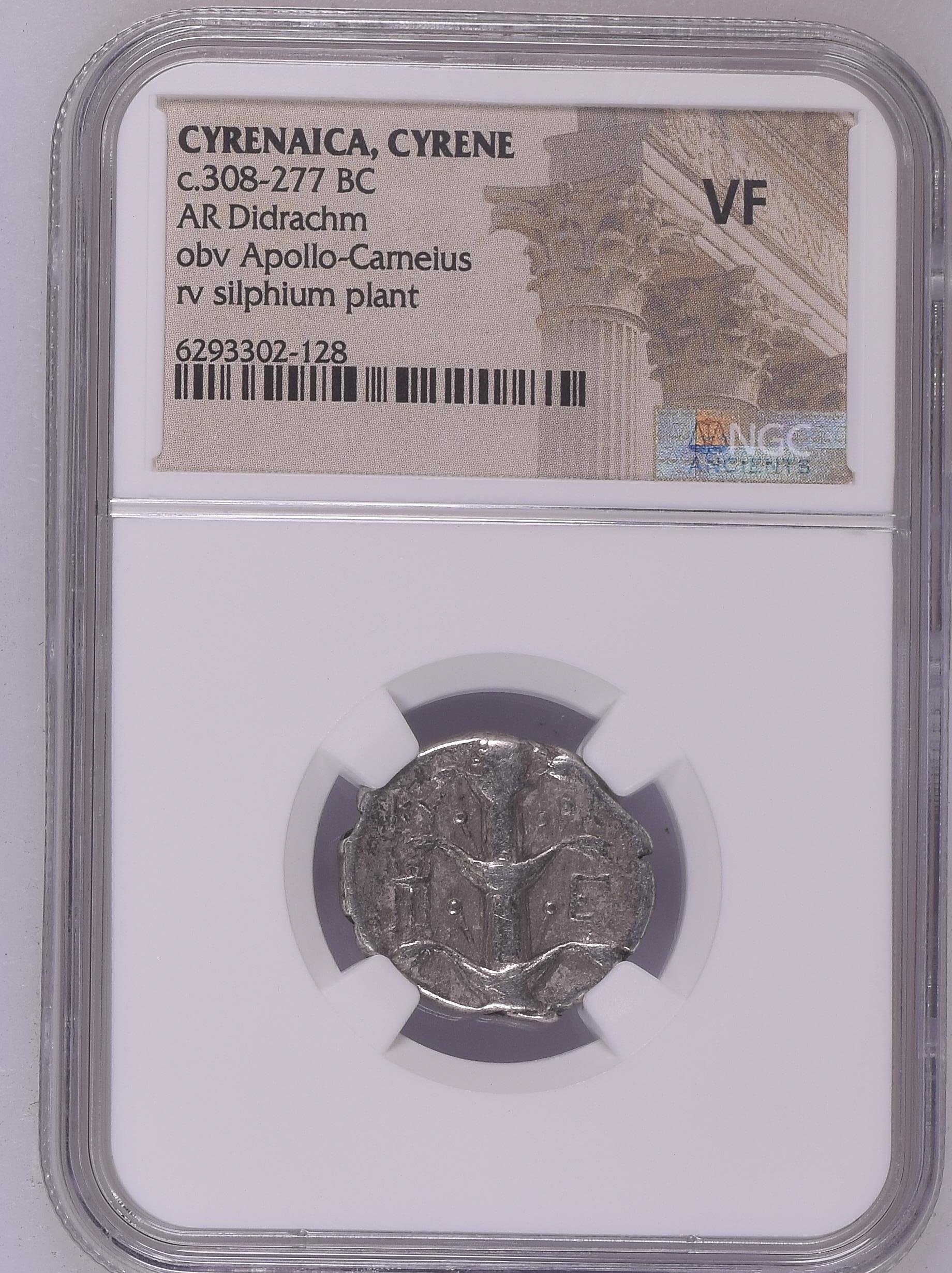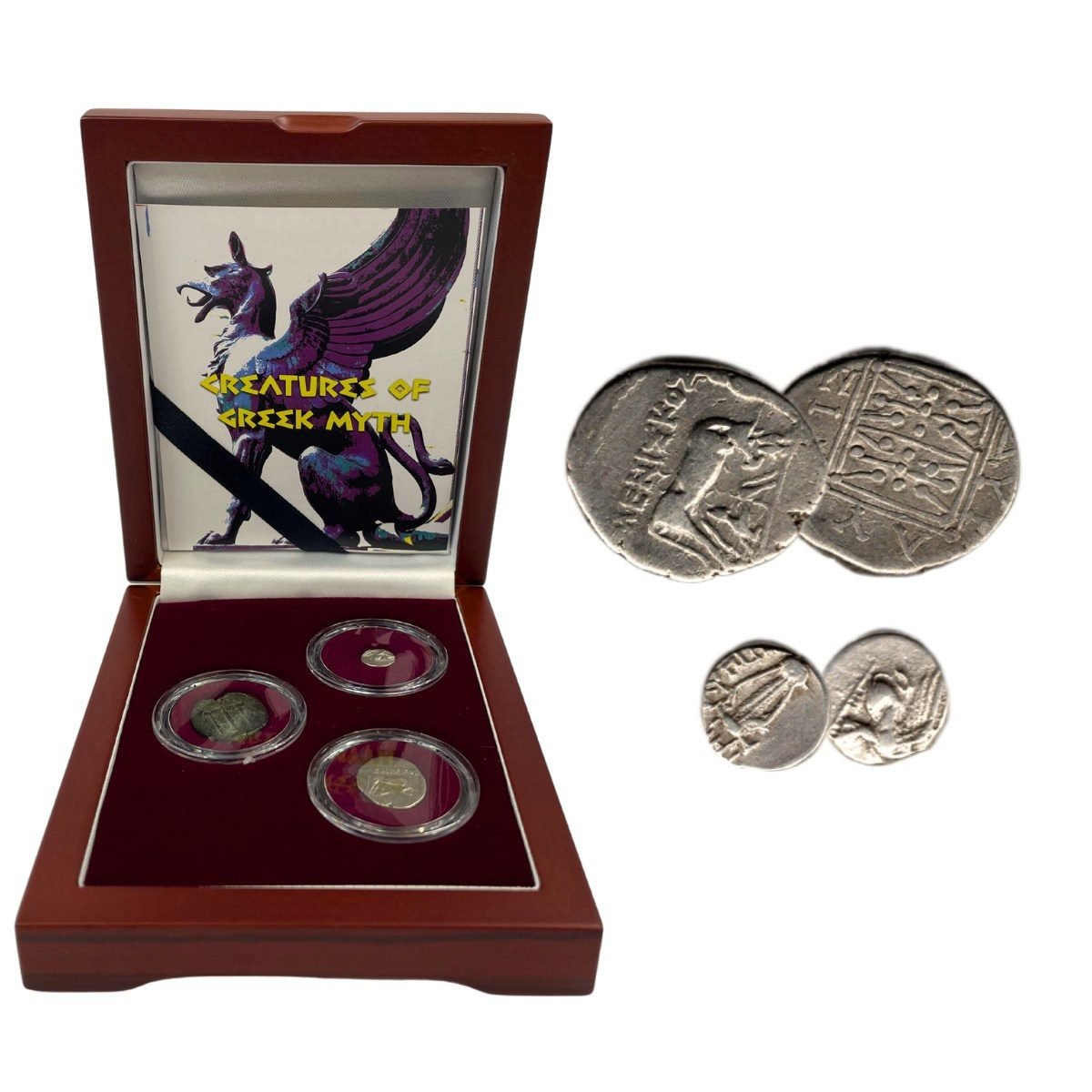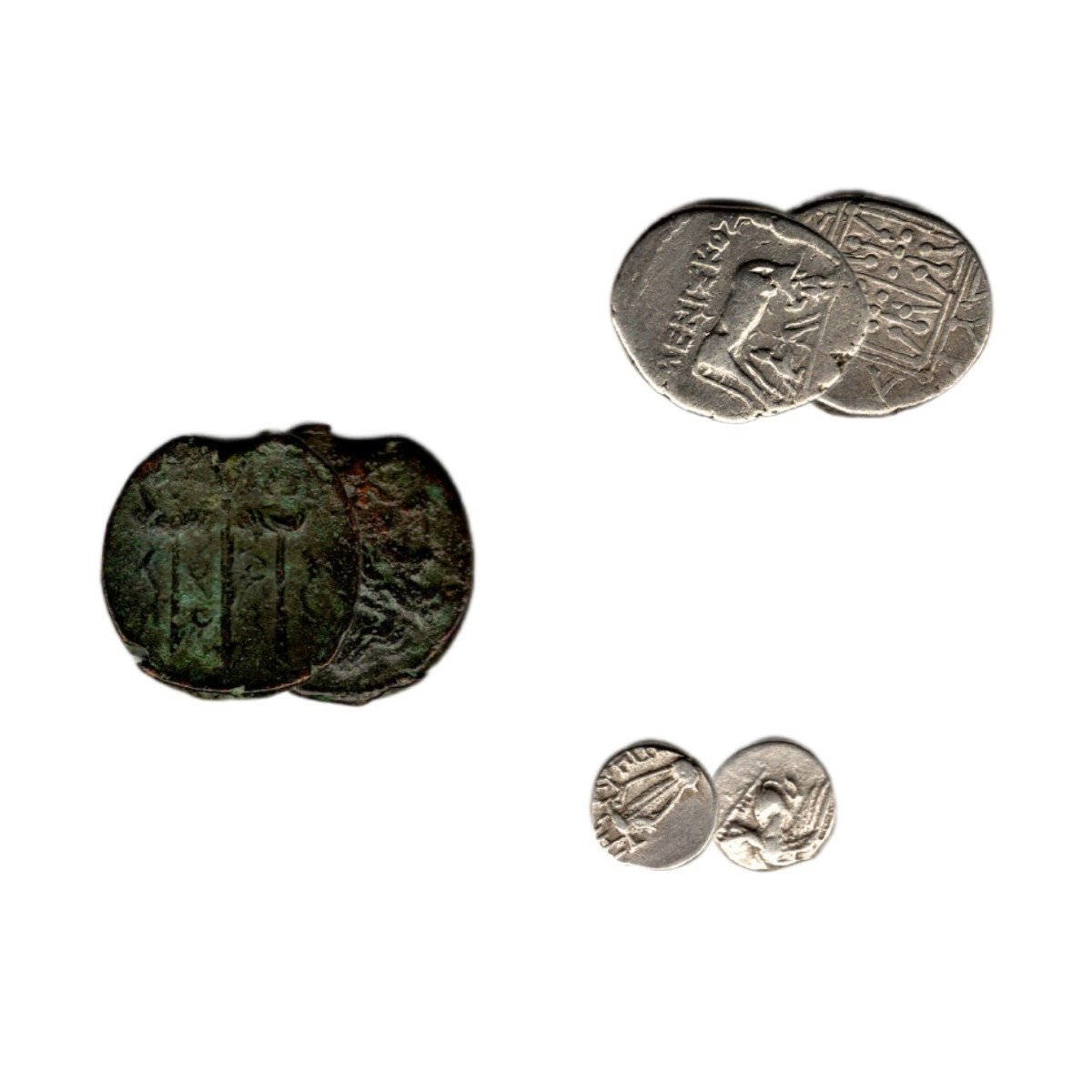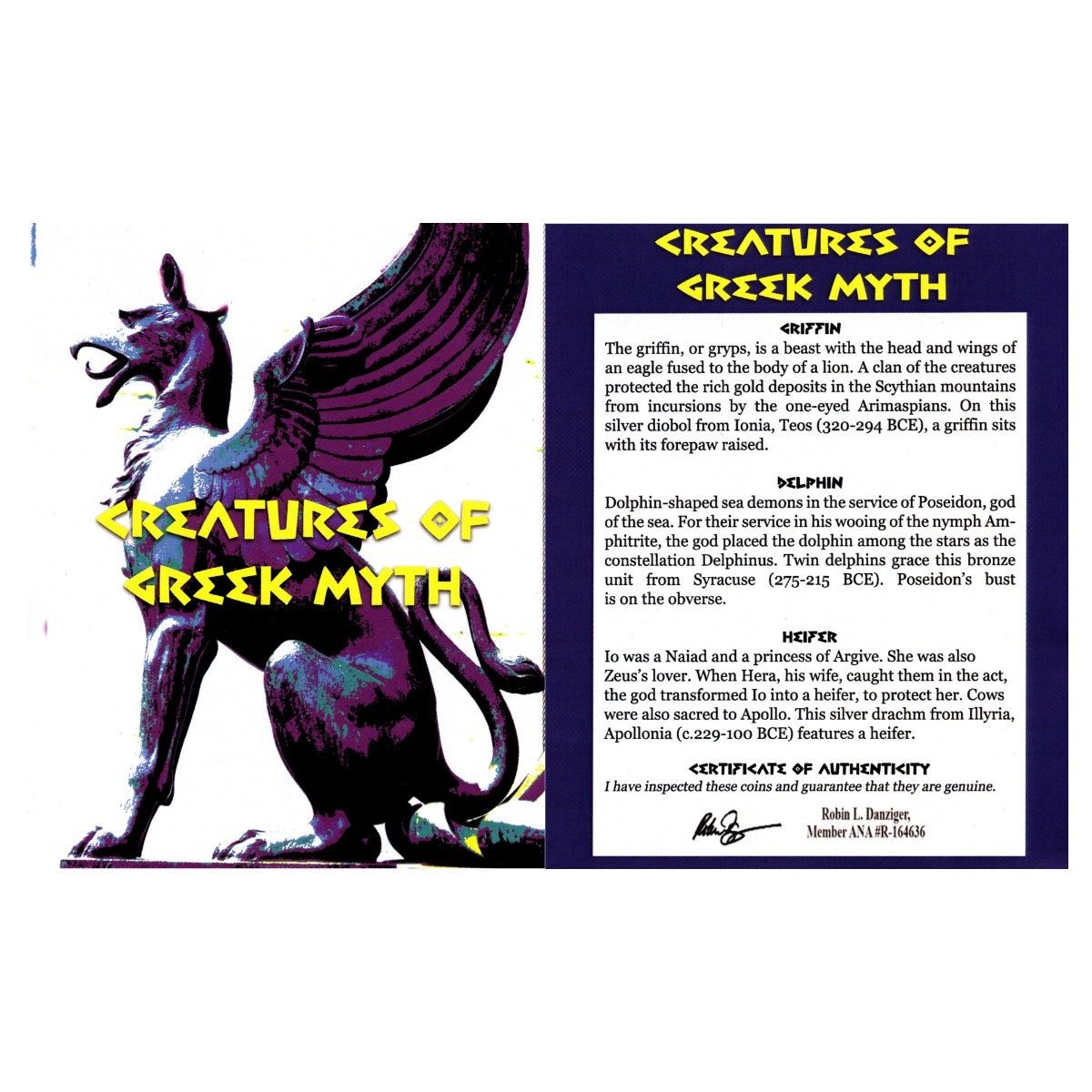Sicilian Bronze Coin from Himera featuring Gorgon (about 2430 years ago)
This bronze coin was minted between 415-410 BC in Himera, an ancient Greek colony on the northern coast of Sicily (modern Italy).
Front Side: Features a facing Gorgon head (mythological creature with snakes for hair whose gaze turned onlookers to stone)
Back Side: Displays 6 pellets (dots representing value)
Technical Details:
Weight: 17.22 grams
References: SNG ANS 179-180
Historical Significance: This coin was minted during the final years of Himera's existence. The city was completely destroyed by Carthaginian forces in 409 BC during the Second Sicilian War, making this one of the last coins produced there. The Gorgon image was meant to be apotropaic (warding off evil), a fitting symbol for a city under threat. The simple reverse with pellets indicates the denomination in a system understood by local users. Coins from this brief final period of Himera's history are important archaeological evidence of Greek Sicily's turbulent relationship with Carthage.
This bronze coin was minted between 415-410 BC in Himera, an ancient Greek colony on the northern coast of Sicily (modern Italy).
Front Side: Features a facing Gorgon head (mythological creature with snakes for hair whose gaze turned onlookers to stone)
Back Side: Displays 6 pellets (dots representing value)
Technical Details:
Weight: 17.22 grams
References: SNG ANS 179-180
Historical Significance: This coin was minted during the final years of Himera's existence. The city was completely destroyed by Carthaginian forces in 409 BC during the Second Sicilian War, making this one of the last coins produced there. The Gorgon image was meant to be apotropaic (warding off evil), a fitting symbol for a city under threat. The simple reverse with pellets indicates the denomination in a system understood by local users. Coins from this brief final period of Himera's history are important archaeological evidence of Greek Sicily's turbulent relationship with Carthage.
This bronze coin was minted between 415-410 BC in Himera, an ancient Greek colony on the northern coast of Sicily (modern Italy).
Front Side: Features a facing Gorgon head (mythological creature with snakes for hair whose gaze turned onlookers to stone)
Back Side: Displays 6 pellets (dots representing value)
Technical Details:
Weight: 17.22 grams
References: SNG ANS 179-180
Historical Significance: This coin was minted during the final years of Himera's existence. The city was completely destroyed by Carthaginian forces in 409 BC during the Second Sicilian War, making this one of the last coins produced there. The Gorgon image was meant to be apotropaic (warding off evil), a fitting symbol for a city under threat. The simple reverse with pellets indicates the denomination in a system understood by local users. Coins from this brief final period of Himera's history are important archaeological evidence of Greek Sicily's turbulent relationship with Carthage.




